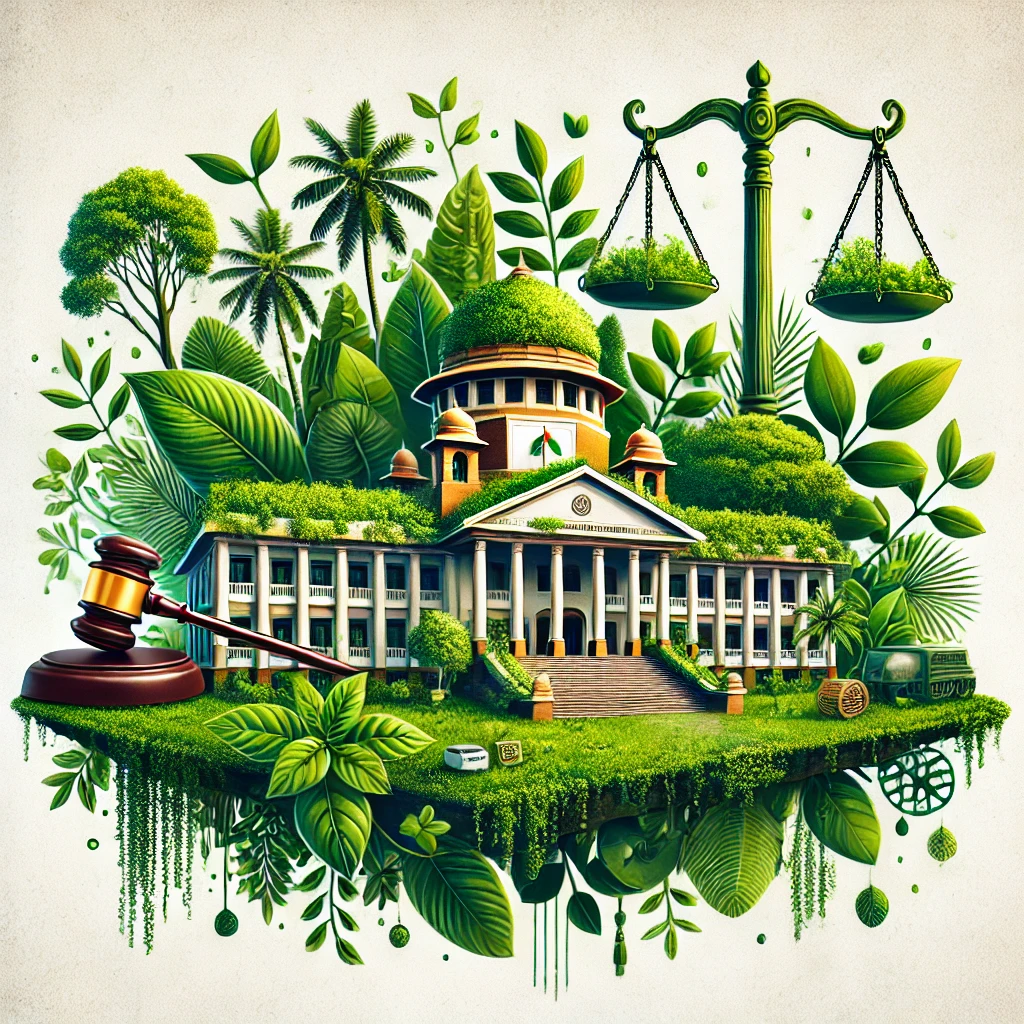Environmental laws at Falkland Islands (BOT)
The Falkland Islands, a British Overseas Territory (BOT), are located in the South Atlantic Ocean. Known for their unique ecosystems and rich biodiversity, the Falkland Islands have a relatively small but significant legal framework to protect the environment. The environmental laws in the Falklands focus on the sustainable use of natural resources, conservation of wildlife, and environmental protection in the context of both economic activities (such as fisheries) and the preservation of natural habitats.
Here is an overview of key environmental laws and policies in the Falkland Islands:
1. The Constitution of the Falkland Islands (2009)
The Constitution of the Falkland Islands provides the framework for governance and legal matters in the territory. It includes a provision for the protection of the environment, recognizing the need for sustainable development and the conservation of natural resources for the benefit of future generations.
The Environmental Management principle in the Constitution ensures that environmental concerns are taken into account in policy decisions and legal frameworks. It establishes the legal basis for the creation of laws to protect the environment and natural resources in the Falklands.
2. The Falkland Islands Environmental Protection Act (2015)
The Environmental Protection Act (2015) is one of the primary pieces of legislation governing environmental protection in the Falkland Islands. It is designed to ensure that activities, such as industrial developments, do not negatively impact the environment, and it sets out the legal framework for managing pollution, waste, and other environmental issues.
The Act includes provisions for controlling environmental pollution, waste management, and the conservation of habitats and biodiversity. It also outlines procedures for conducting Environmental Impact Assessments (EIAs) for projects that may have significant environmental effects.
The Act gives the Falkland Islands Government (FIG) authority to enforce environmental regulations and ensure that individuals and businesses comply with legal obligations concerning environmental protection.
3. The Conservation of Wildlife and Habitats Ordinance (1999)
The Conservation of Wildlife and Habitats Ordinance (1999) is a key piece of legislation aimed at protecting the diverse wildlife and habitats of the Falkland Islands. The ordinance focuses on the protection of species, including seabirds, marine mammals, and land-based animals that are native to the region.
The law regulates activities that may threaten wildlife, such as hunting, capturing, or trading protected species. It also provides a legal framework for establishing protected areas where wildlife can be preserved in their natural habitats.
The ordinance also empowers the Falkland Islands Conservation and Management Authority (FICMA) to manage and oversee the protection of wildlife and their habitats.
4. The Fisheries (Conservation and Management) Ordinance (1999)
Given the importance of fisheries to the Falkland Islands' economy and ecosystem, the Fisheries (Conservation and Management) Ordinance (1999) is a vital piece of environmental legislation. This law regulates the management and conservation of marine resources, especially fish stocks, in the waters around the islands.
The Ordinance provides guidelines for sustainable fisheries practices, including regulating fishing quotas, licenses, and the methods of fishing used to prevent overfishing and protect marine biodiversity.
It establishes the Falkland Islands Fisheries Department, which is responsible for managing fishing activities, ensuring the protection of marine ecosystems, and enforcing sustainable fishing practices. This includes monitoring and controlling fishing operations, research on fish populations, and the protection of vulnerable marine species.
The Ordinance also requires the creation of Marine Protected Areas (MPAs) to conserve critical marine habitats.
5. The Marine Pollution Control Ordinance (1995)
The Marine Pollution Control Ordinance (1995) is designed to protect the marine environment around the Falkland Islands from pollution caused by ships, industrial activities, and other sources.
The law covers various types of marine pollution, including oil spills, chemical discharges, and waste dumping, and sets out regulations to prevent, control, and respond to pollution incidents.
The Falkland Islands Government enforces the ordinance through regular inspections, licensing, and monitoring of maritime activities. The law also stipulates penalties for those who violate pollution controls.
6. The Land Planning and Development Control Ordinance (2008)
The Land Planning and Development Control Ordinance (2008) regulates land use and development on the Falkland Islands. The ordinance aims to ensure that land development projects do not cause environmental harm or degradation, including protection of natural landscapes, wildlife habitats, and biodiversity.
The law requires that Environmental Impact Assessments (EIAs) be carried out for certain development projects, particularly those that may have significant environmental effects. It also provides guidelines for sustainable development, with emphasis on avoiding habitat destruction, water pollution, and erosion.
The Development Control and Planning Authority is responsible for overseeing the enforcement of this Ordinance.
7. The Wildlife (Prohibition of Trade) Ordinance (1999)
The Wildlife (Prohibition of Trade) Ordinance (1999) prohibits the illegal trade of protected wildlife species and their derivatives. This ordinance is particularly important for protecting marine life and bird species that are endemic to the Falkland Islands and are under threat due to illegal trade practices.
The law aligns with international agreements and conventions on wildlife protection, including the Convention on International Trade in Endangered Species of Wild Fauna and Flora (CITES).
8. The Water Resources (Protection) Ordinance (1997)
The Water Resources (Protection) Ordinance (1997) regulates the use and protection of freshwater resources on the Falkland Islands. It provides for the protection of water quality and ensures that water resources are not polluted or over-exploited.
The law establishes standards for water quality, including guidelines for the treatment and disposal of wastewater. It also regulates water extraction for agricultural and industrial purposes to prevent depletion of freshwater resources.
The Ordinance is enforced by the Falkland Islands Government in coordination with other relevant agencies.
9. The Falkland Islands National Parks and Protected Areas (1999)
The National Parks and Protected Areas Ordinance (1999) establishes a system of protected areas across the Falkland Islands, with the aim of preserving the islands' unique biodiversity and natural landscapes.
The law provides for the creation of national parks, nature reserves, and other protected areas where human activity is regulated to prevent environmental damage. These areas serve as sanctuaries for endemic species, including penguins, seals, and various seabirds.
The Falkland Islands Government has the authority to designate and manage protected areas, with the goal of conserving ecosystems and promoting sustainable tourism.
10. The Environmental Management and Assessment Framework
The Falkland Islands have developed an Environmental Management and Assessment Framework to guide sustainable development in the region. The framework includes guidelines for conducting Environmental Impact Assessments (EIAs), public consultations, and monitoring of environmental impacts associated with industrial activities.
The Environmental Impact Assessment process is critical for major development projects such as oil exploration, mining, and large-scale construction. This helps to ensure that potential environmental risks are identified and mitigated before projects proceed.
11. International Agreements
The Falkland Islands are signatories to various international environmental agreements and conventions, reflecting the region’s commitment to global environmental protection:
The Convention on Biological Diversity (CBD): This international treaty aims to protect biodiversity and promote sustainable use of natural resources.
The Convention on Migratory Species (CMS): The Falkland Islands participate in international efforts to conserve migratory species that pass through or inhabit the region.
The Antarctic Treaty System: As the Falkland Islands are located near Antarctica, they are part of the broader Antarctic Treaty system that aims to protect the environment of the Antarctic region.
Challenges and Enforcement
Despite the comprehensive environmental legal framework, the Falkland Islands face some challenges in enforcement and resource management:
Climate Change: Like many other regions, the Falklands are vulnerable to the impacts of climate change, including rising sea levels, changes in marine ecosystems, and extreme weather events.
Resource Management: The Falklands' reliance on fisheries and tourism creates a need to balance economic growth with environmental sustainability. Ensuring that industries operate within sustainable limits is crucial for long-term environmental protection.
Conclusion
The Falkland Islands have established a robust set of environmental laws aimed at protecting their unique natural resources and ecosystems. These laws emphasize sustainable development, wildlife conservation, pollution control, and the responsible use of natural resources. However, effective enforcement, adaptation to climate change, and the management of natural resources in line with international standards remain key challenges for the region. Through its legal framework, the Falkland Islands aim to ensure environmental protection while supporting economic development and maintaining biodiversity.




























0 comments